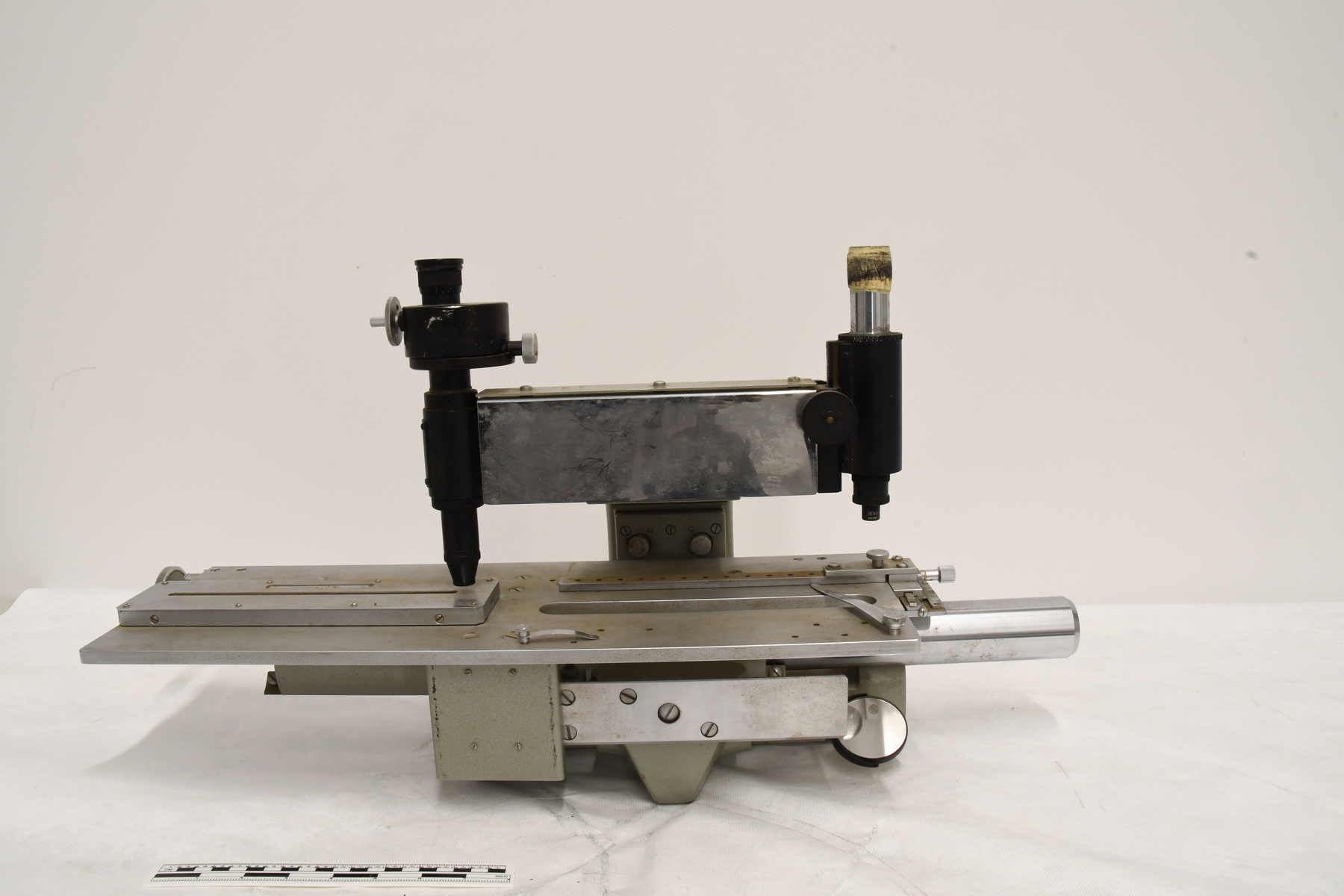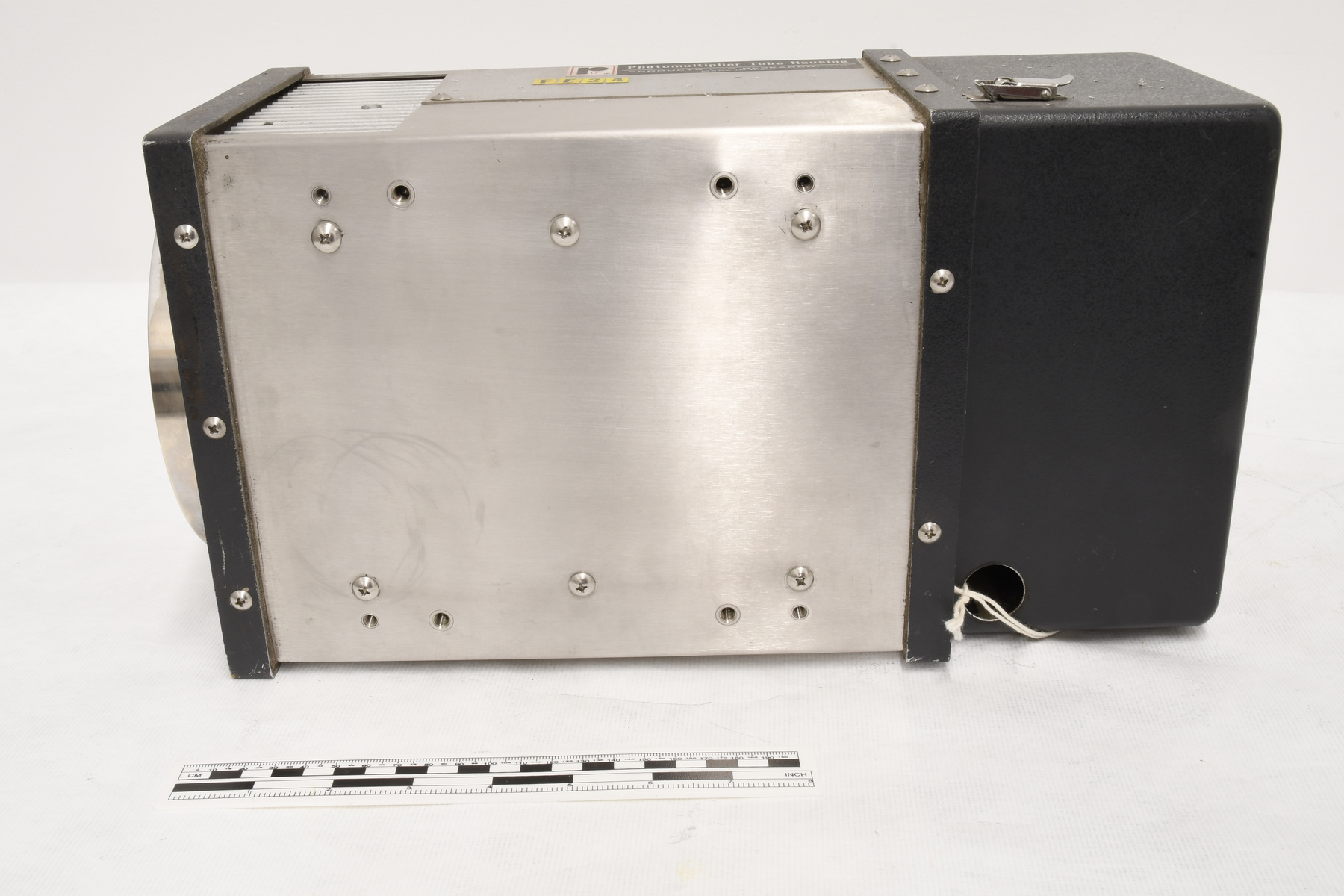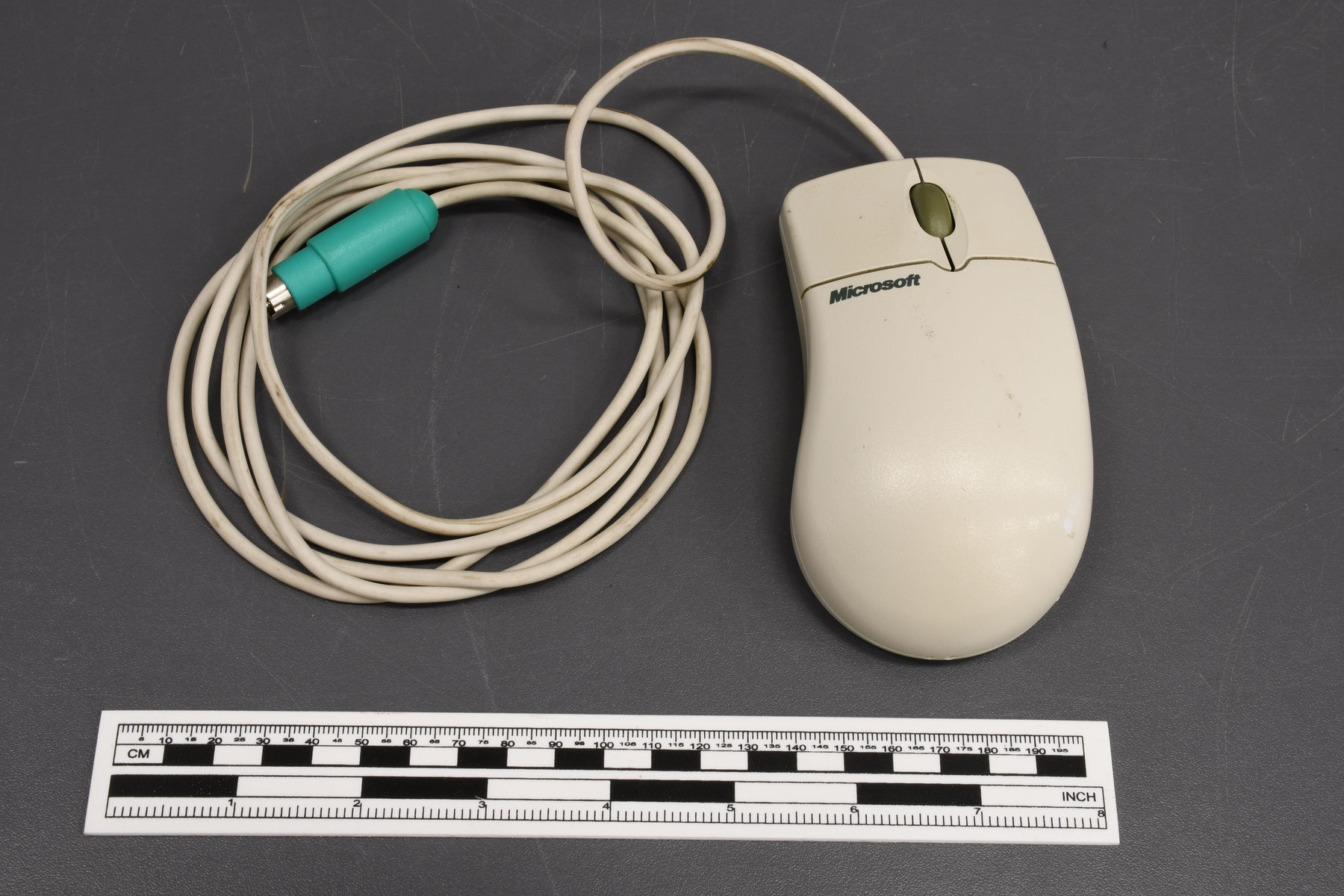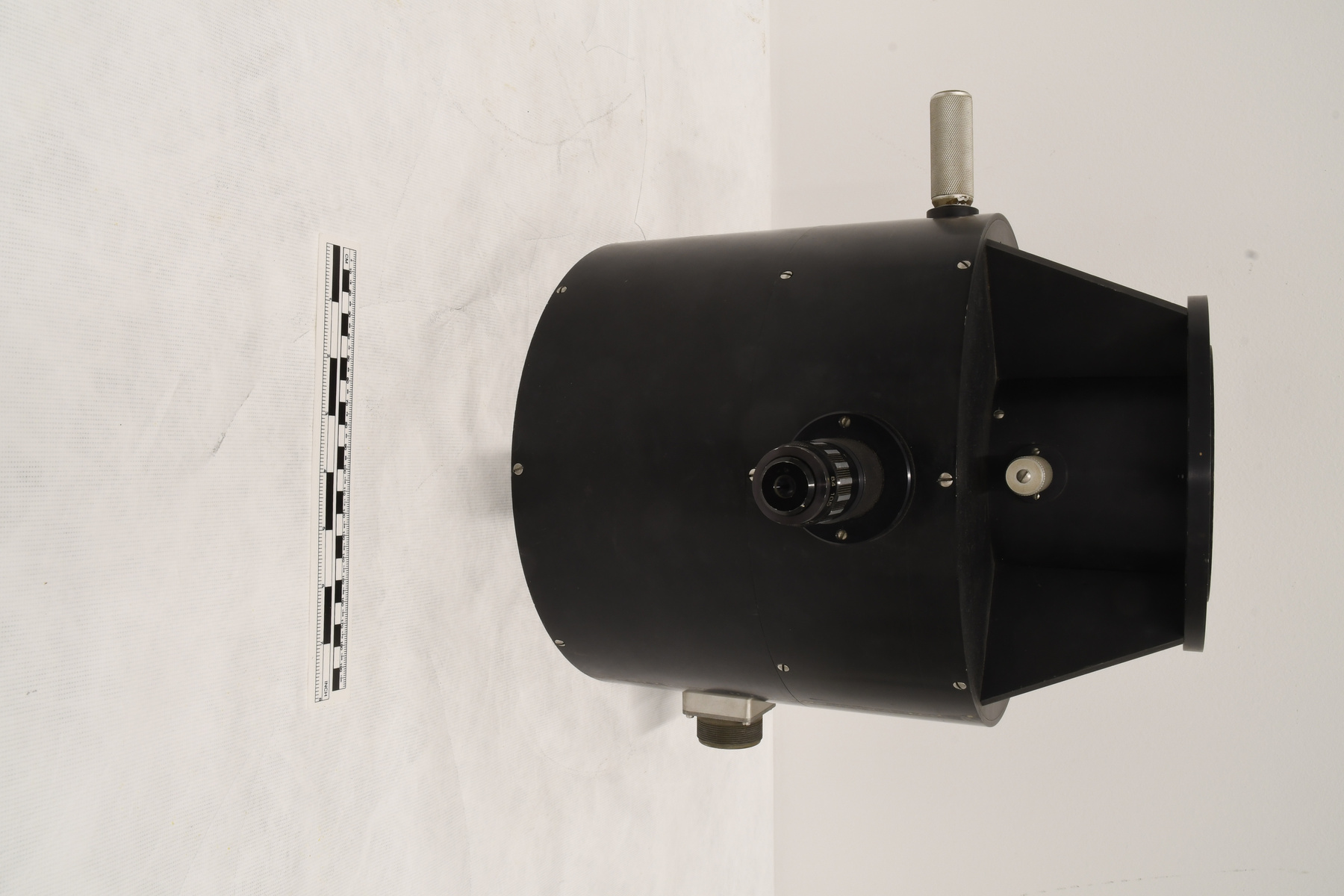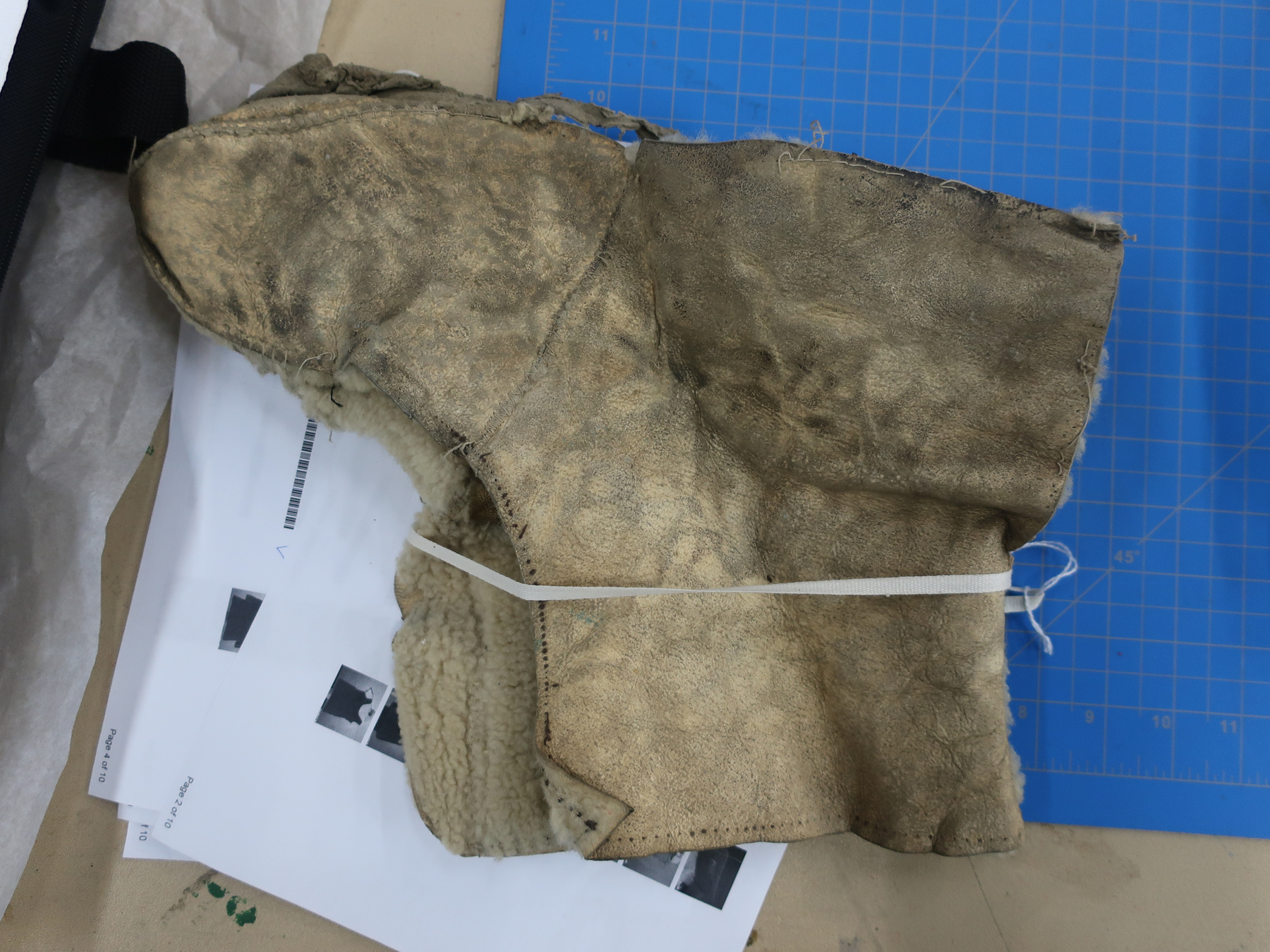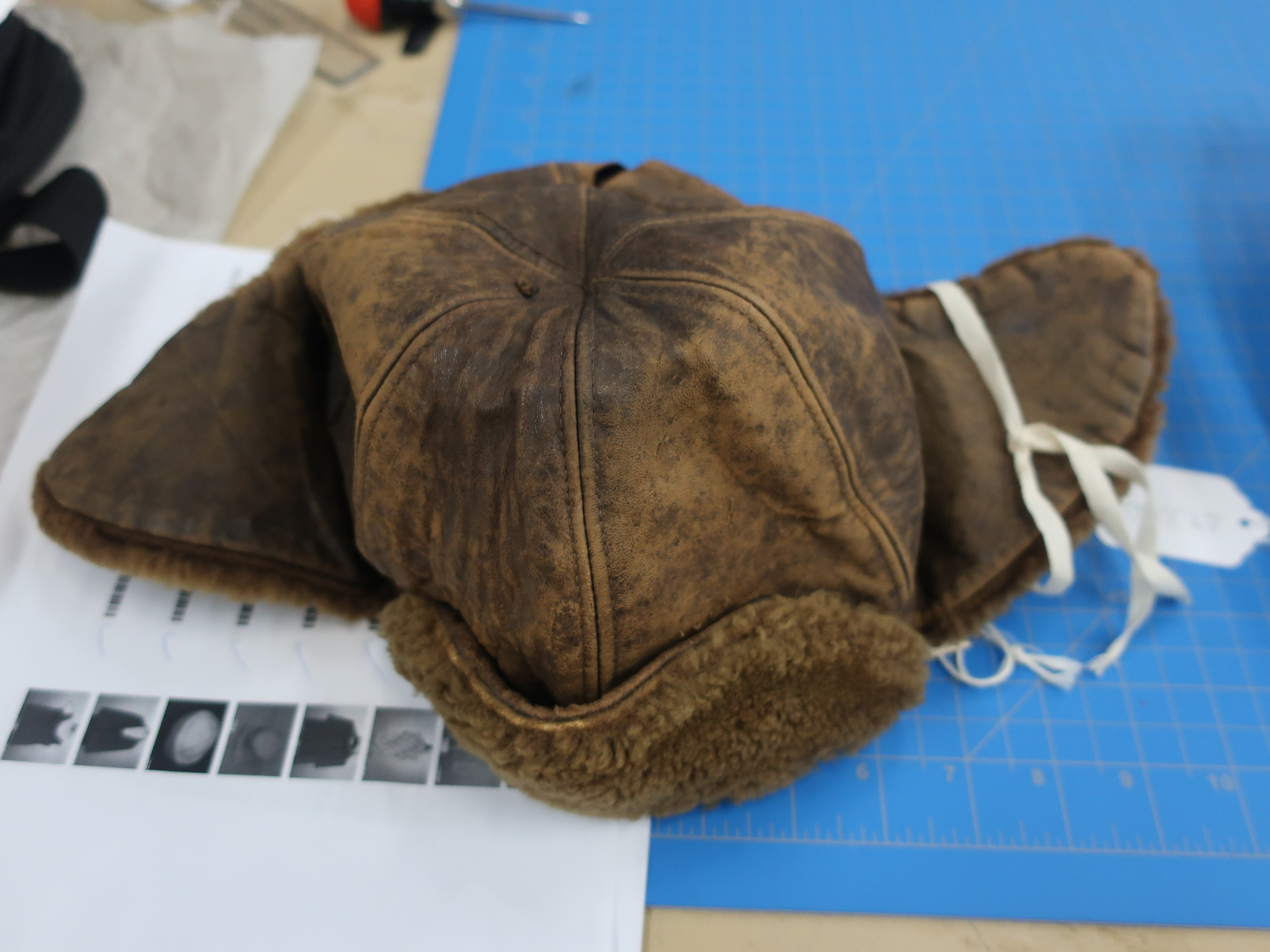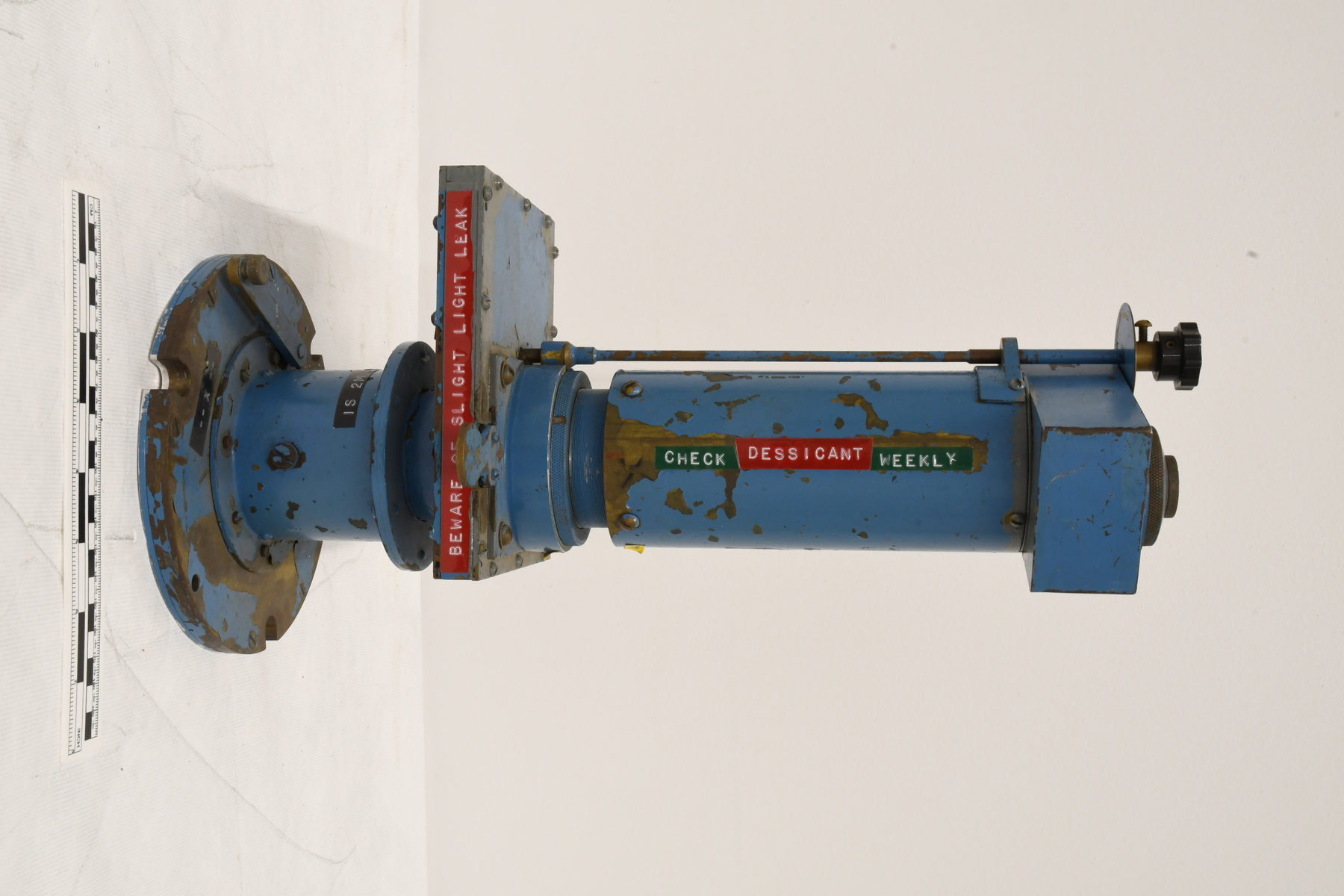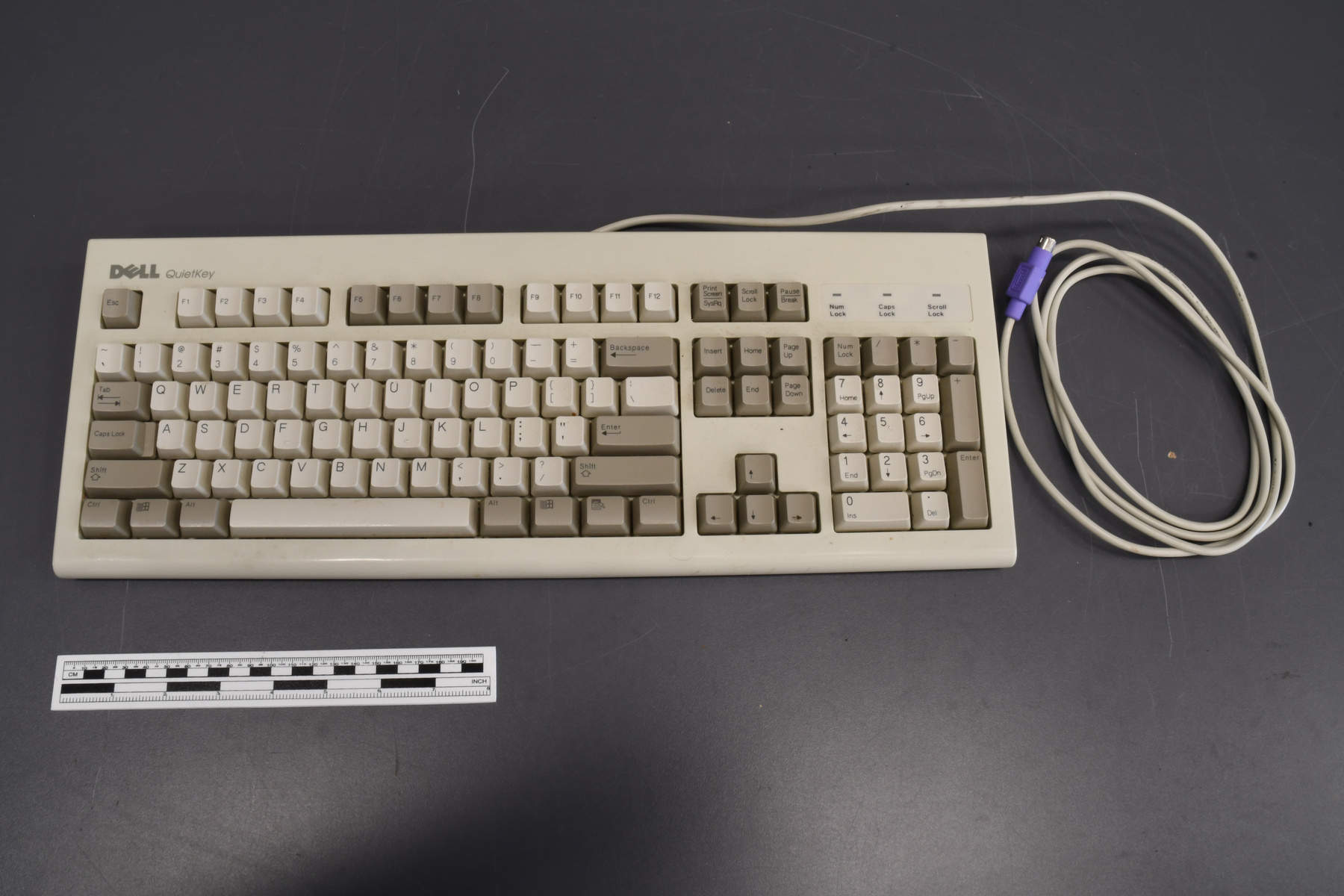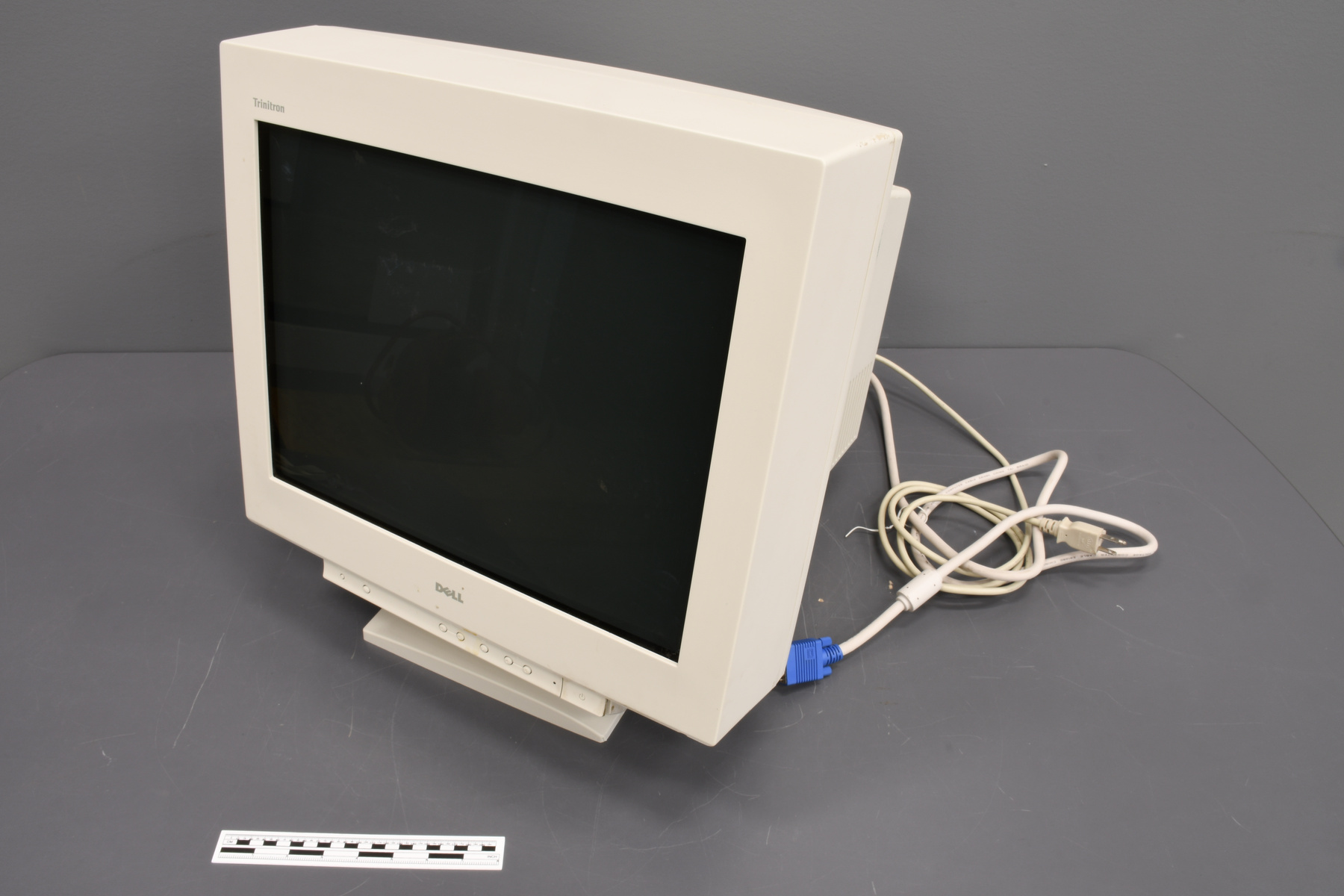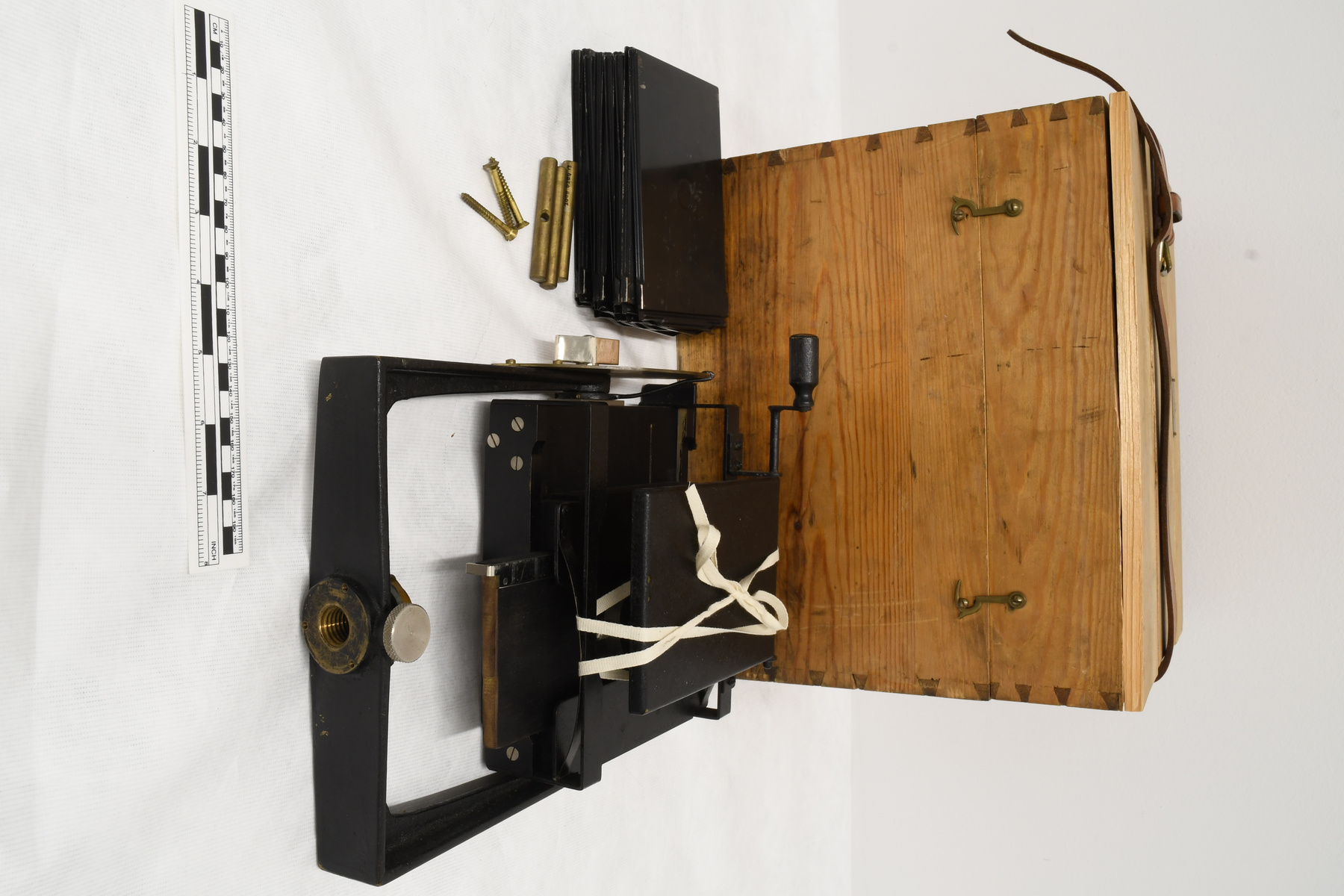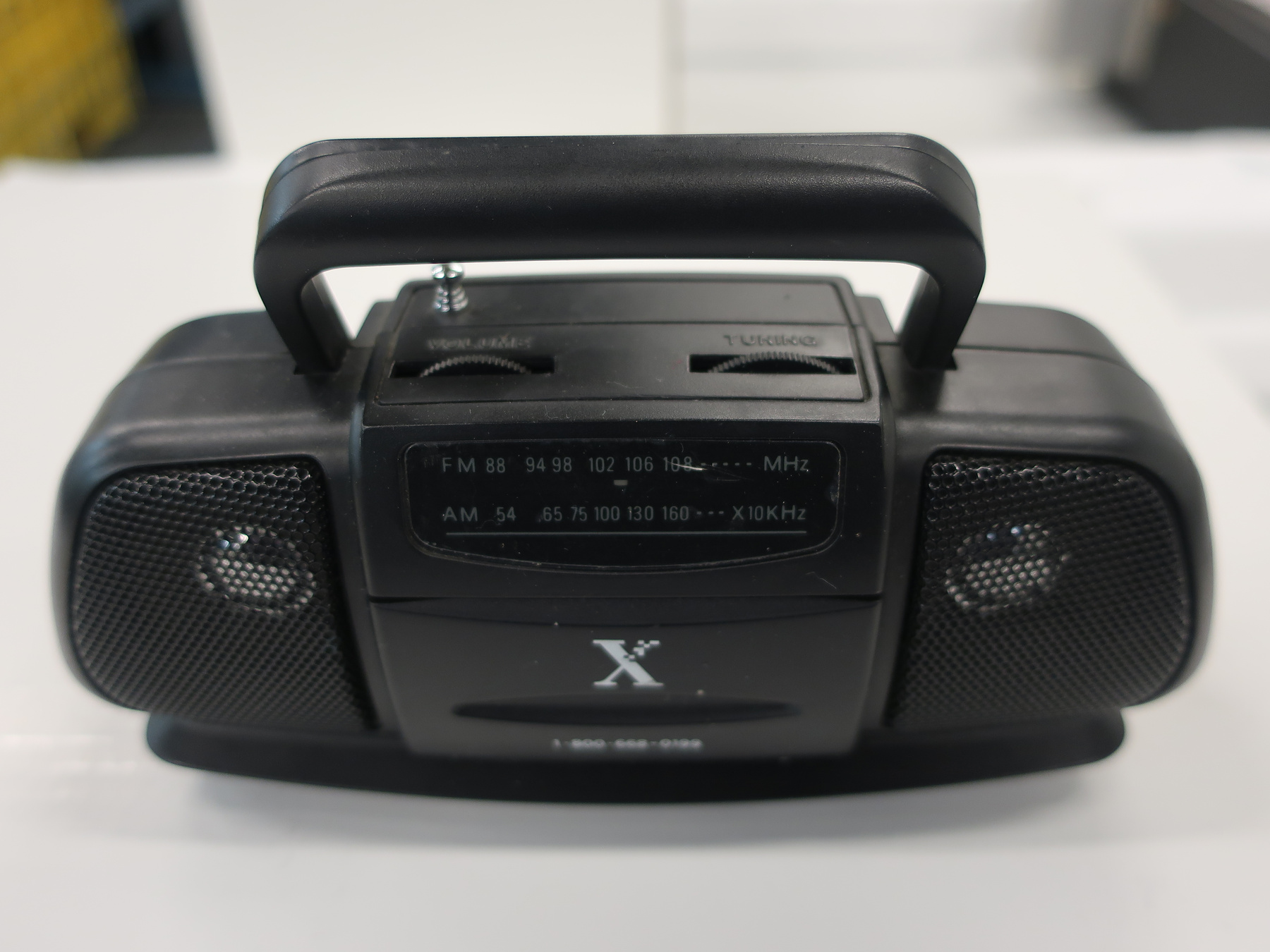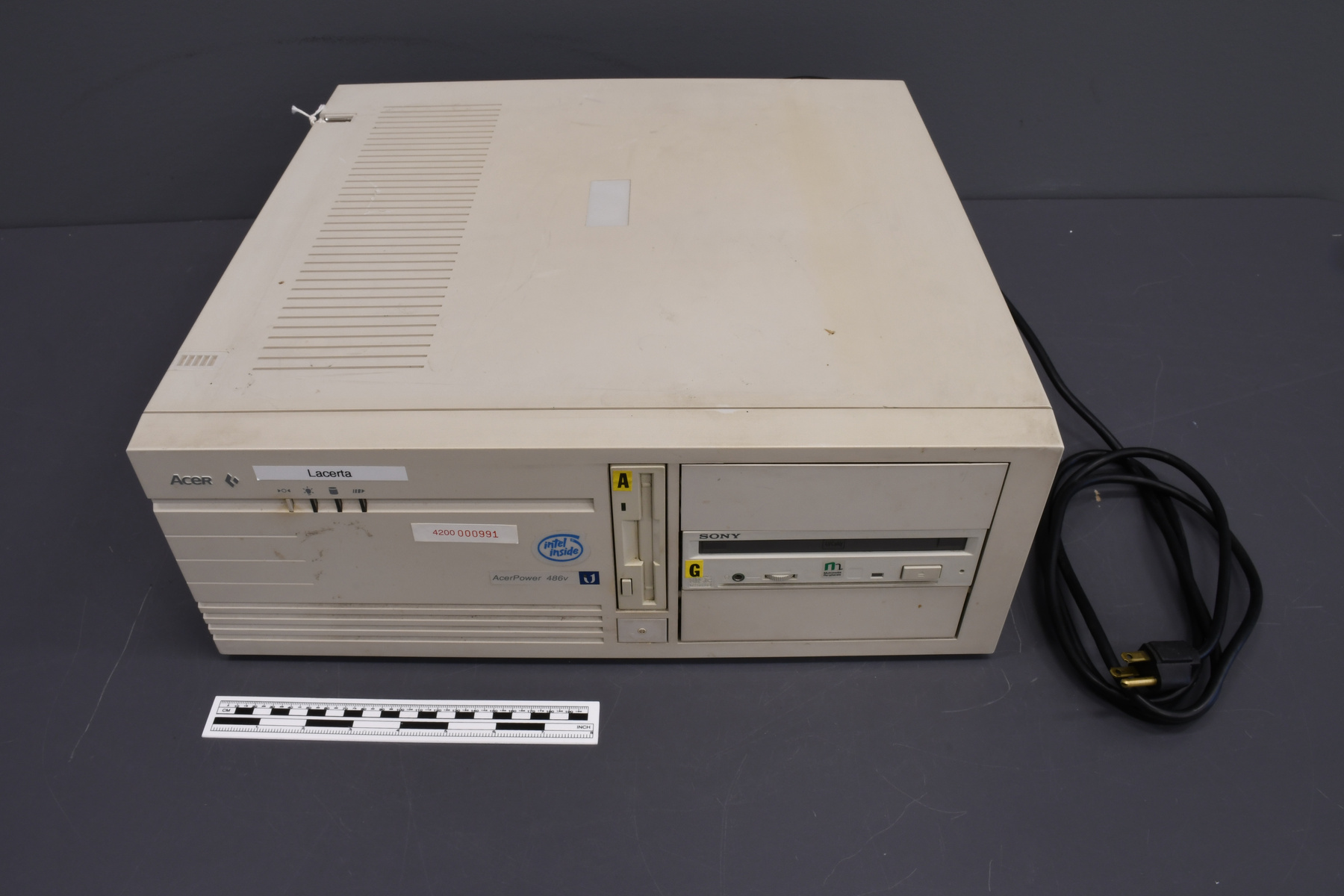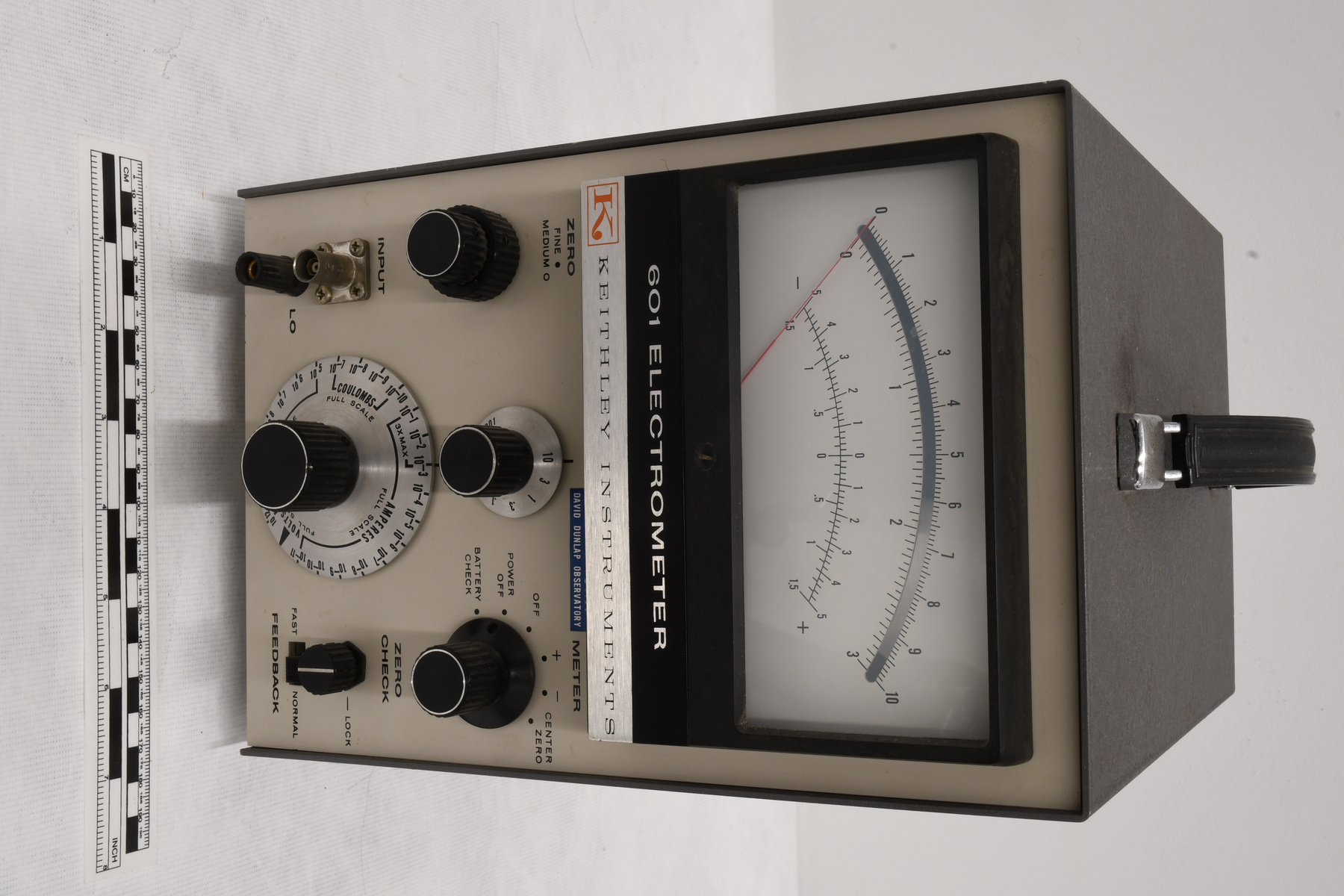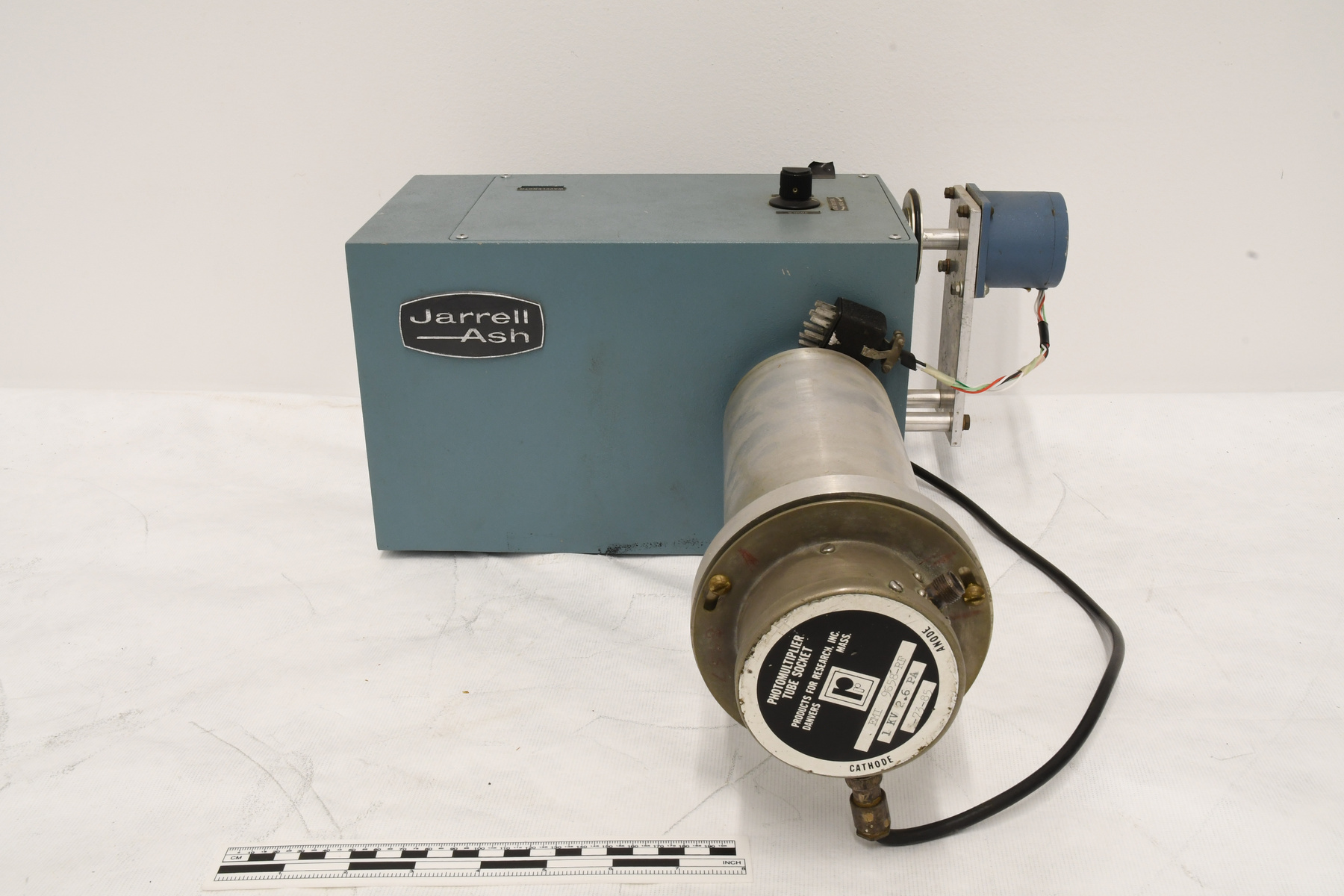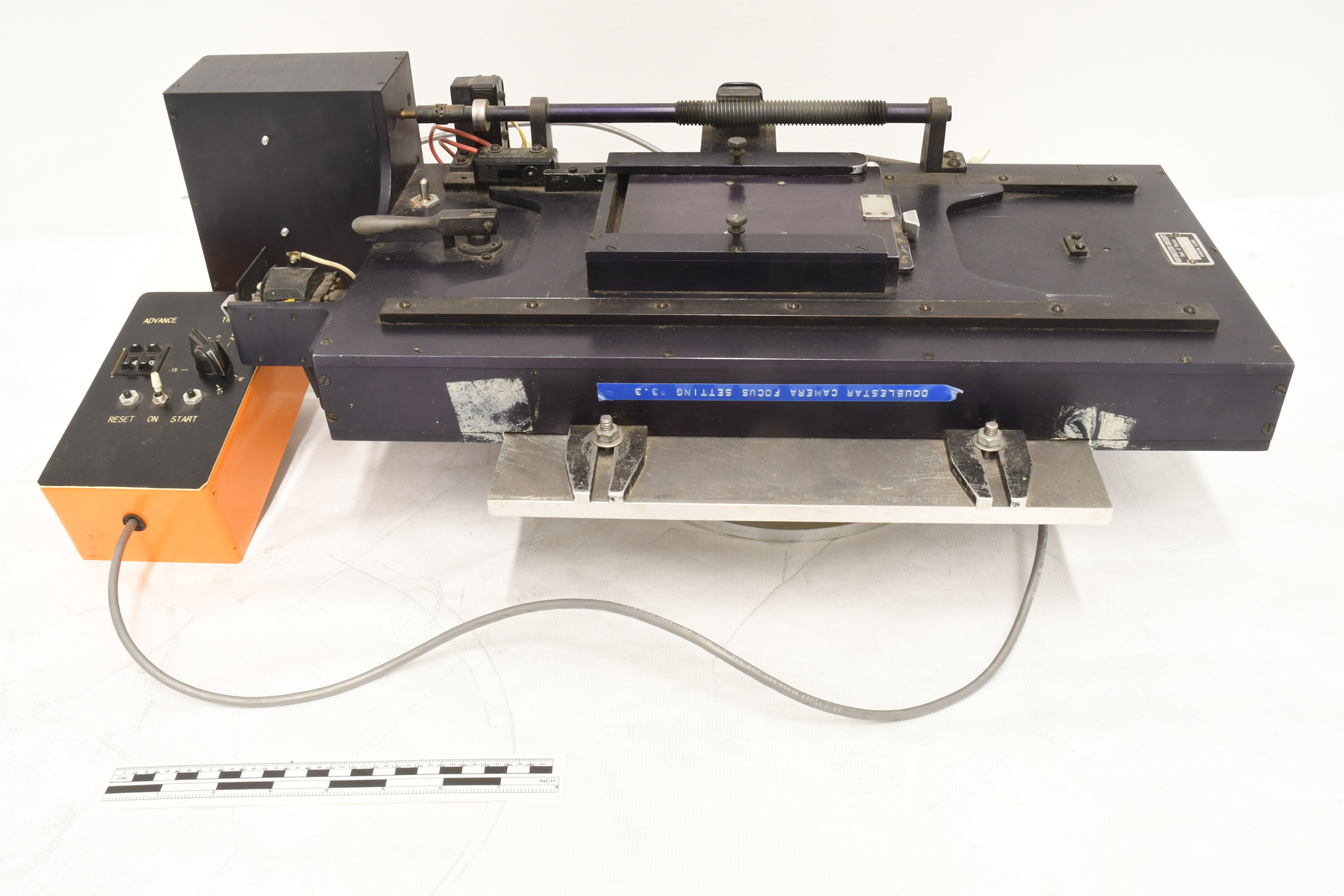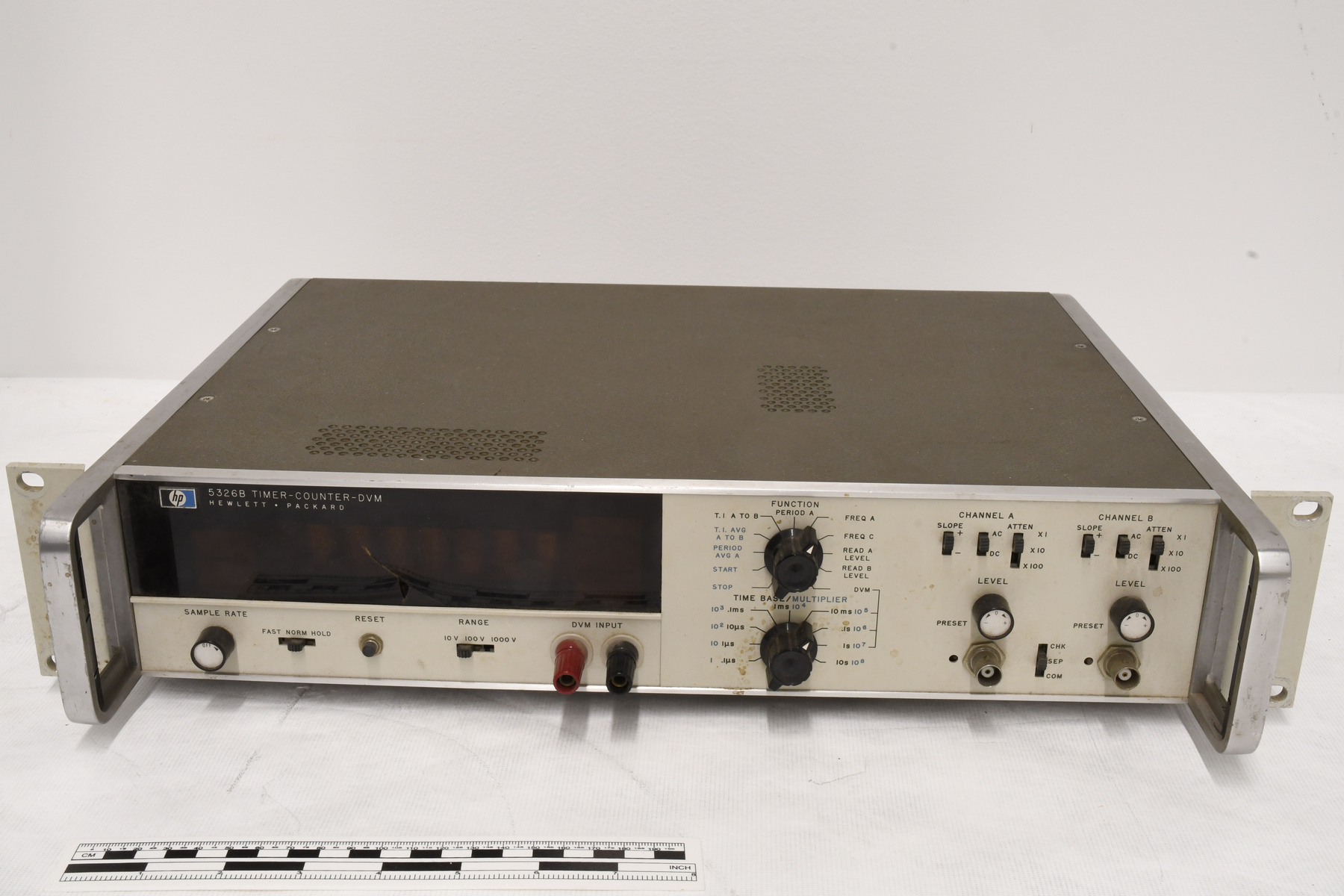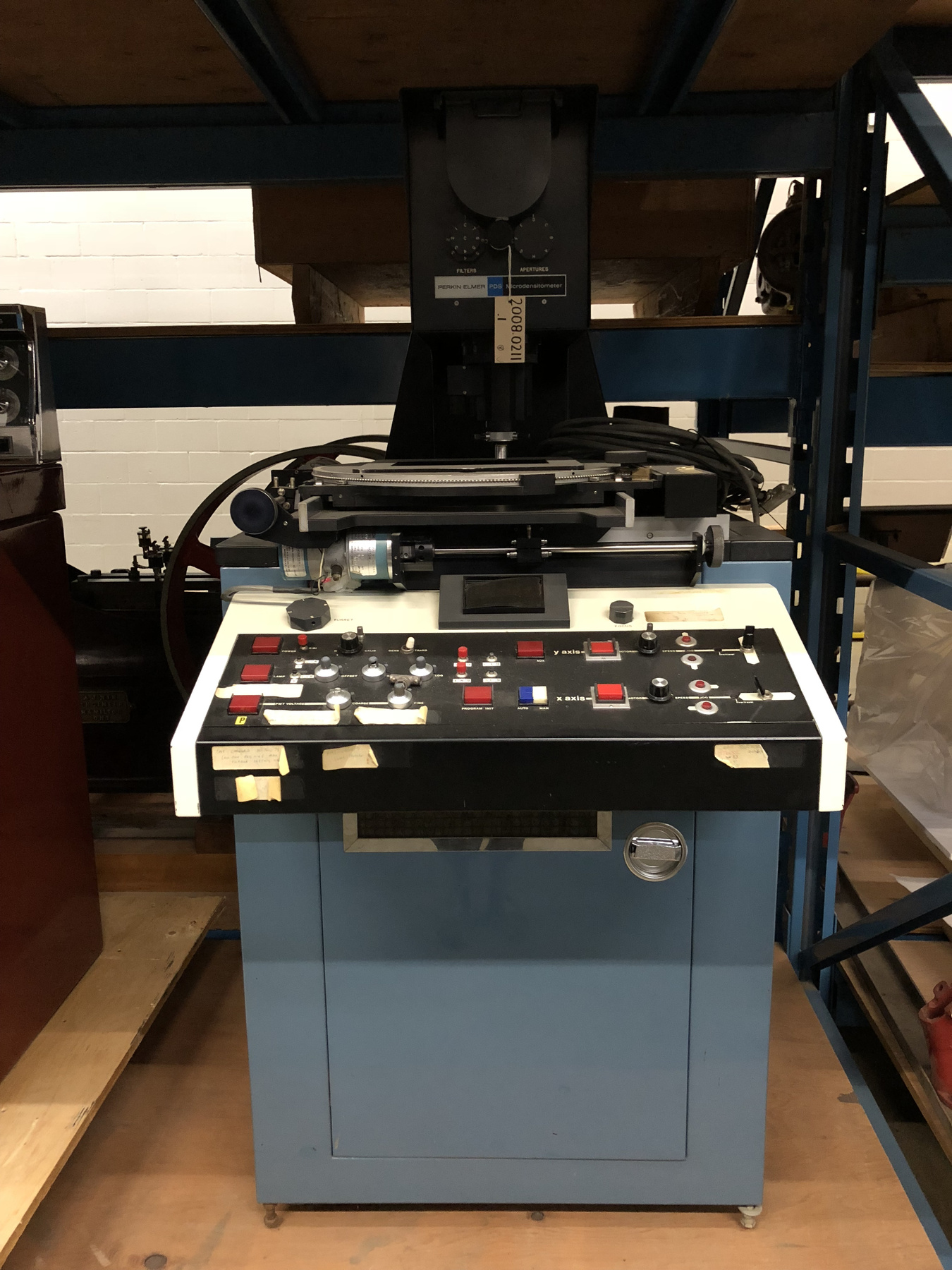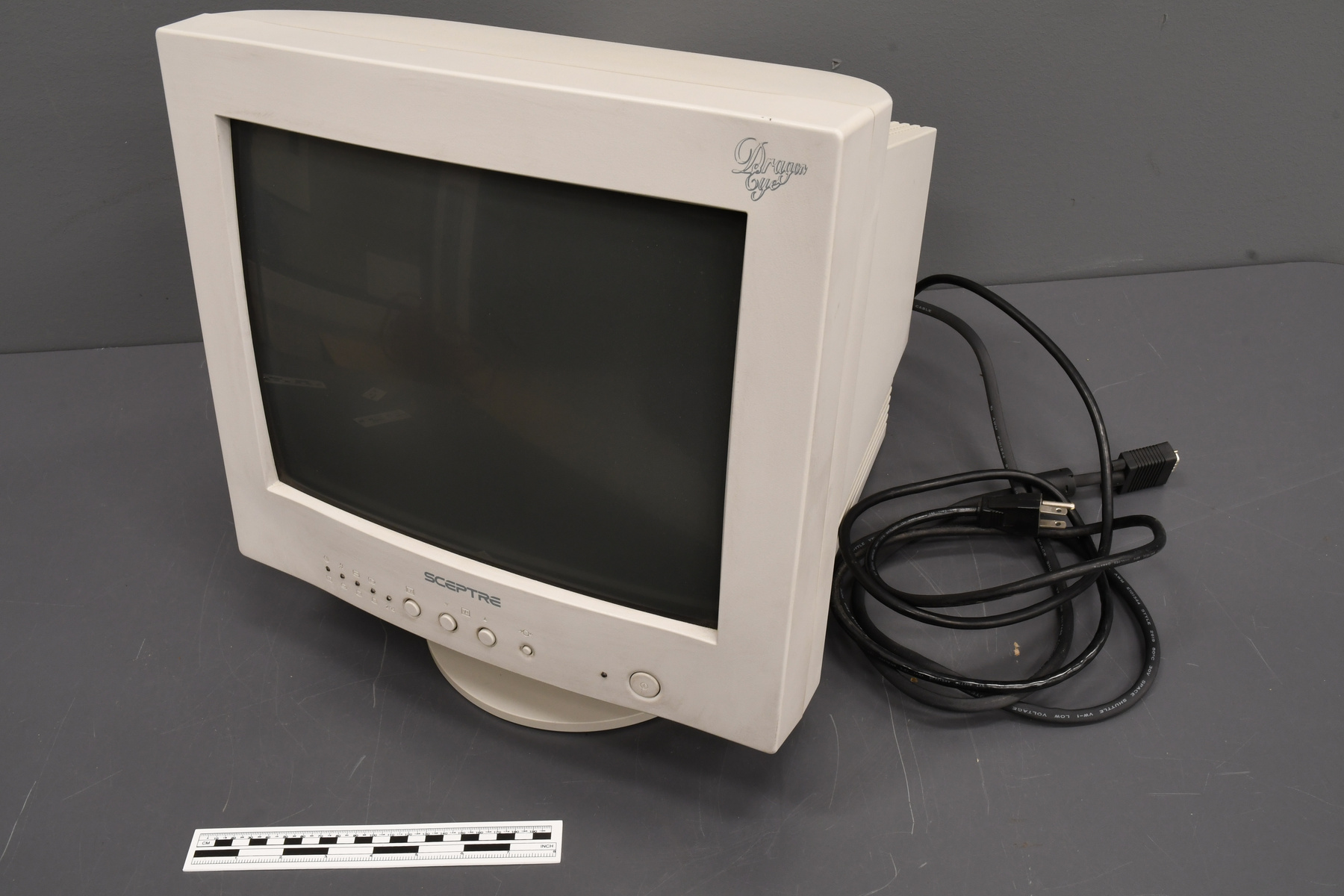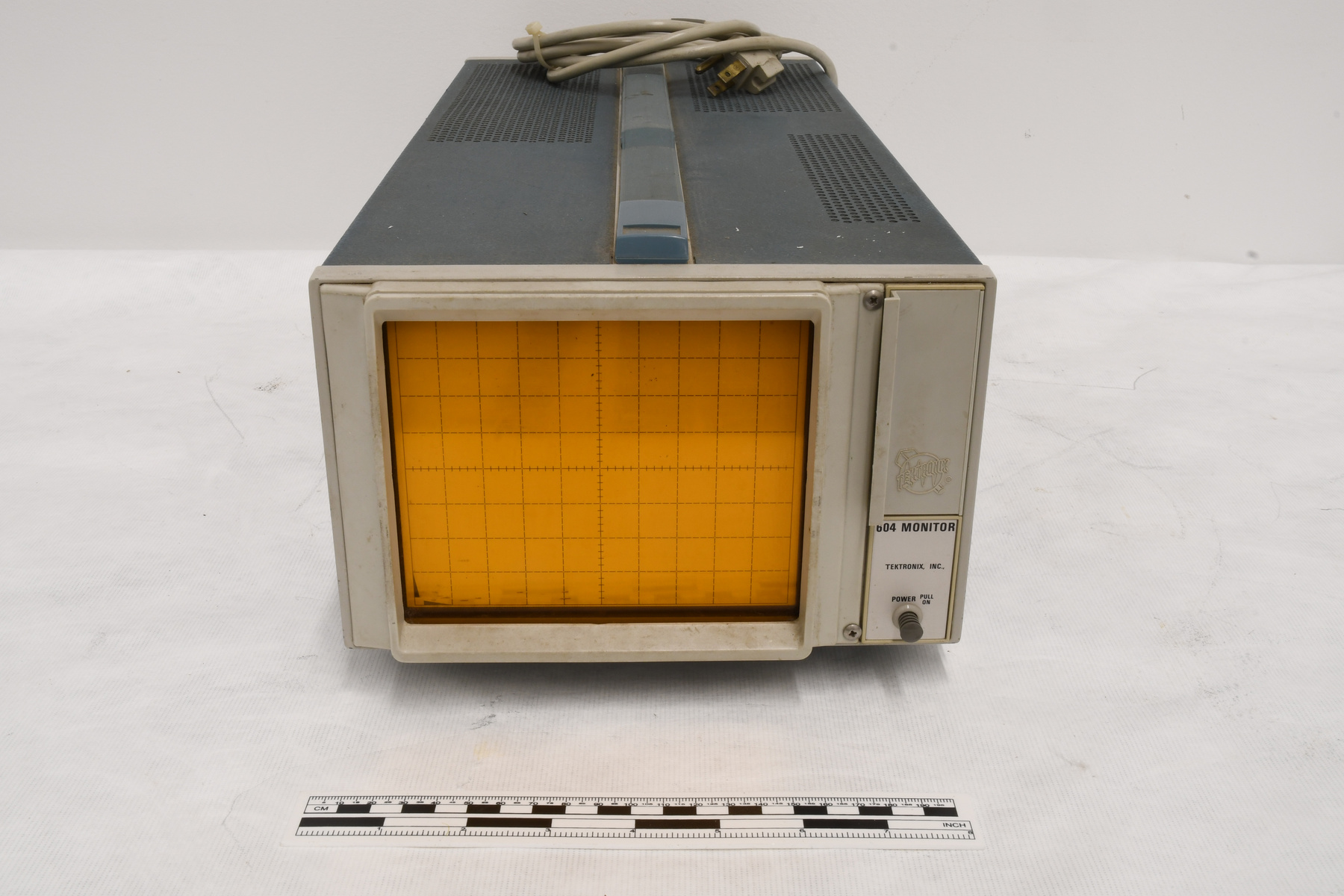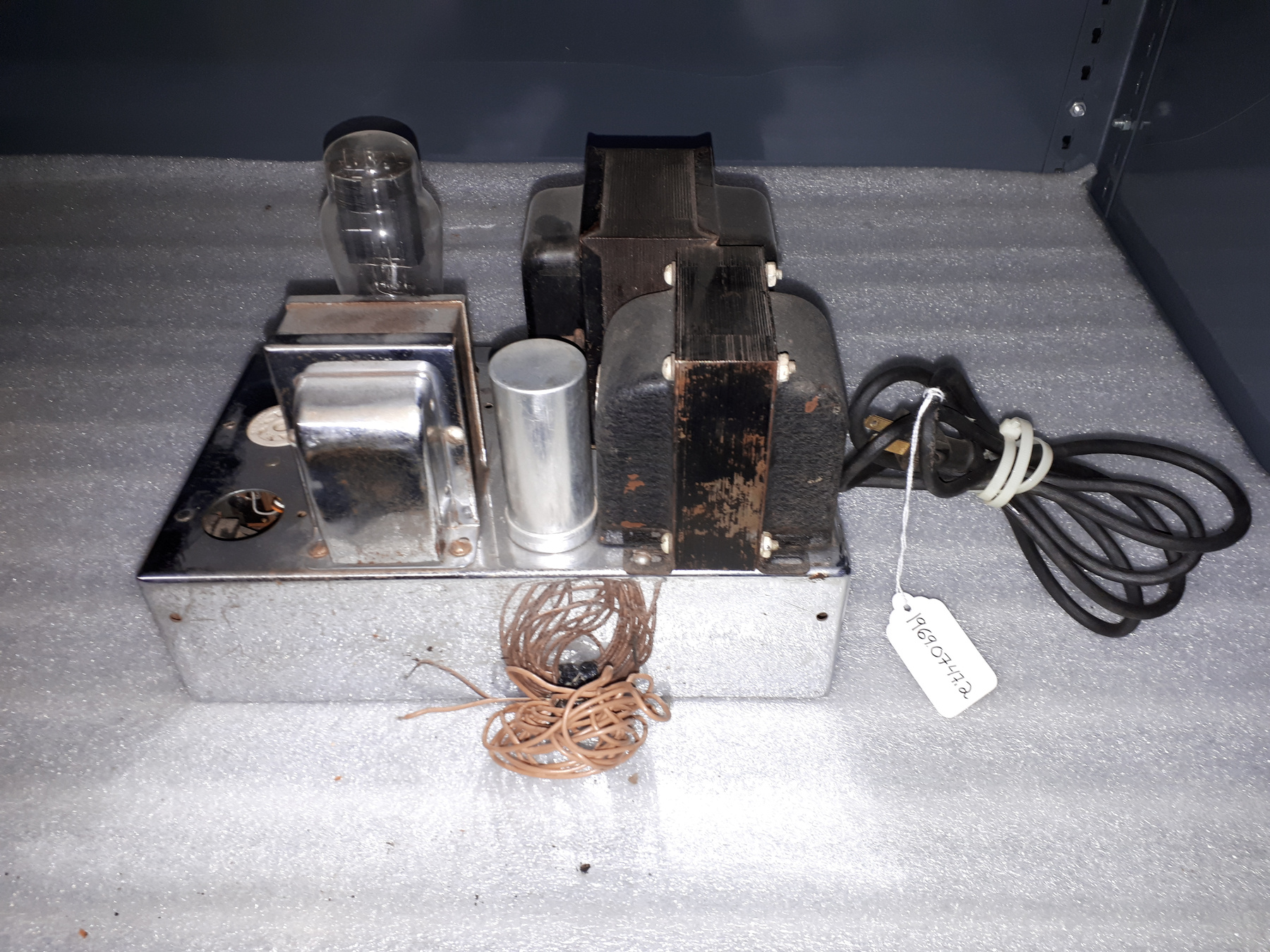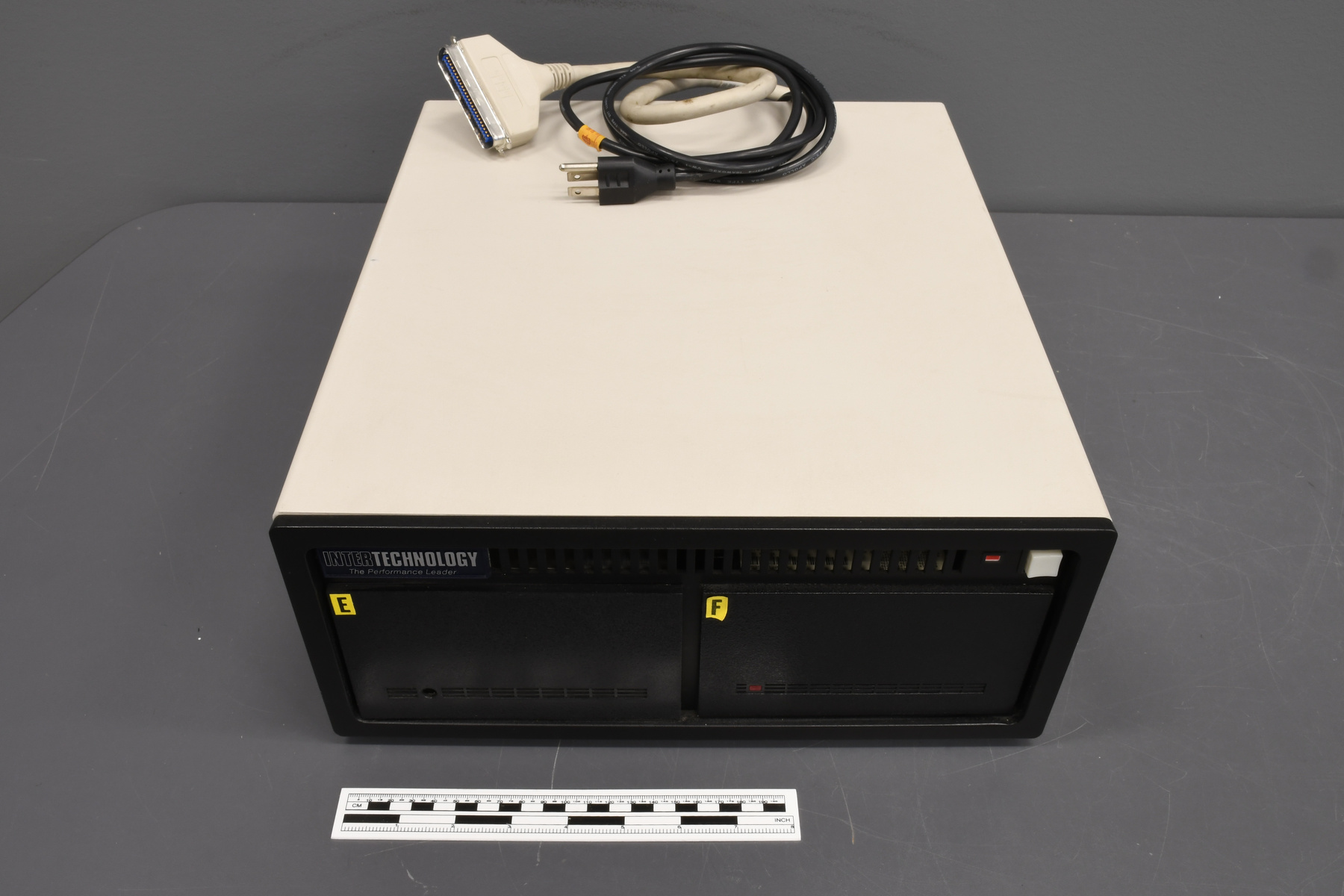Spectrograph
Use this image
Can I reuse this image without permission? Yes
Object images on the Ingenium Collection’s portal have the following Creative Commons license:
Copyright Ingenium / CC BY-NC-ND (Attribution-NonCommercial 4.0 International (CC BY-NC 4.0)
ATTRIBUTE THIS IMAGE
Ingenium,
2008.0189.001
Permalink:
Ingenium is releasing this image under the Creative Commons licensing framework, and encourages downloading and reuse for non-commercial purposes. Please acknowledge Ingenium and cite the artifact number.
DOWNLOAD IMAGEPURCHASE THIS IMAGE
This image is free for non-commercial use.
For commercial use, please consult our Reproduction Fees and contact us to purchase the image.
- OBJECT TYPE
- Echelle
- DATE
- Unknown
- ARTIFACT NUMBER
- 2008.0189.001
- MANUFACTURER
- University of Toronto, David Dunlop Observatory
- MODEL
- DDO/Echelle
- LOCATION
- Richmond Hill, Ontario, Canada
More Information
General Information
- Serial #
- N/A
- Part Number
- 1
- Total Parts
- 6
- AKA
- N/A
- Patents
- N/A
- General Description
- Metal body and parts/ Synthetic cord and wire coverings, parts/ Glass parts
Dimensions
Note: These reflect the general size for storage and are not necessarily representative of the object's true dimensions.
- Length
- 101.0 cm
- Width
- 72.0 cm
- Height
- 50.0 cm
- Thickness
- N/A
- Weight
- N/A
- Diameter
- N/A
- Volume
- N/A
Lexicon
- Group
- Astronomy
- Category
- Observation equipment
- Sub-Category
- N/A
Manufacturer
- AKA
- Unknown
- Country
- Canada
- State/Province
- Ontario
- City
- Richmond Hill
Context
- Country
- Canada
- State/Province
- Ontario
- Period
- Unknown
- Canada
-
An instrument used at the David Dunlap Observatory at the University of Toronto, one of Canada's most important astronomical observatories. The David Dunlap Observatory opened in 1935 as the result of a bequest from the wife of David Dunlap. The telescope was a 74 inch (188 cm) reflector built by Grubb Parsons of Newcastle-upon-Tyne in England. The 74 inch was then the largest telescope in Canada (surpassing the 72 inch telescope of the Dominion Astrophysical Observatory in Victoria) and became the second largest in the world after the 100 inch Hooker Telescope of the Mt. Wilson Observatory outside Los Angeles. DDO's reputation grew and following WWII, it began to graduate most of the astronomers produced in Canada with University of Western Ontario far behind. Beginning in the 1960s a number of other astronomy departments were created but UofT/DDO held its place, a position it probably still holds. The DDO had a good technical staff which gave them an advantage and, with most of the 1940s to early 1970s top astronomers coming from UofT, grants from NRC and then ENSERC were almost guaranteed and allowed UofT's top astronomers -- Hogg, van den Berg, Fernie, Bolton, Kamper, Martin, etc. to acquire or build some of the best equipment available in university observatories. For optical observatories, only the DAO had technical staff and budgets that surpassed those of DDO. In 2007, citing increasing light pollution, the University of Toronto announced plans to sell the Observatory property. In June 2008, it was sold to Corsica Development Inc., a subsidiary of Metrus Development Inc. and the Observatory was closed. In 2009 the Observatory buildings and 80% of the site were designated a cultural heritage landscape. Also in 2009 Corsica and the Royal Astronomical Society of Canada, Toronto Centre announced an agreement allowing the RASC to provide public education and outreach programs at the observatory, and to operate the 188 cm telescope. - Function
-
An astronomical instrument used to took images of stellar spectra. - Technical
-
Designed by Dr. John Lester, this was used mounted on the side of the 74" and took images of stellar spectra using a CCD detector (now defunct but in the instrument). Generally, an echelle spectrograph is a spectrograph that uses an échelle grating to achieve high spectral resolution and wide wavelength coverage. The overlapping spectra produced by the grating are separated by a prism or a grism before reaching the detector. The sensitivity brought to modern échelle spectrographs by CCD detectors has made them indispensable in such fields as astroseismology and extrasolar planet searches (Ref. 3). - Area Notes
-
Unknown
Details
- Markings
- Black and silver label on photomultiplier tube housing reads 'Photomultiplier Tube Housing/ PRODUCTS FOR RESEARCH, INC./ MADE IN U.S.A.'/ Black and silver label inside photomultiplier tube housing reads 'PHOTOMULTIPLIER TUBE SOCKET/ PRODUCTS FOR RESEARCH, INC./ DANVERS MASS./ Made in U.S.A./ 9658-81/ 6410-80/ RF TSA/ CATHODE ANODE'
- Missing
- Unknown
- Finish
- Flat black painted body/ Textured blue painted CCD detector casing/ Metallic grey photomultiplier tube housing/ Black and grey synthetic cord and wire coverings/ Black painted metal bars/ Colourless transparent glass/ Metallic parts
- Decoration
- N/A
CITE THIS OBJECT
If you choose to share our information about this collection object, please cite:
University of Toronto, David Dunlop Observatory, Spectrograph, Unknown Date, Artifact no. 2008.0189, Ingenium – Canada’s Museums of Science and Innovation, http://collection.ingeniumcanada.org/en/item/2008.0189.001/
FEEDBACK
Submit a question or comment about this artifact.
More Like This







